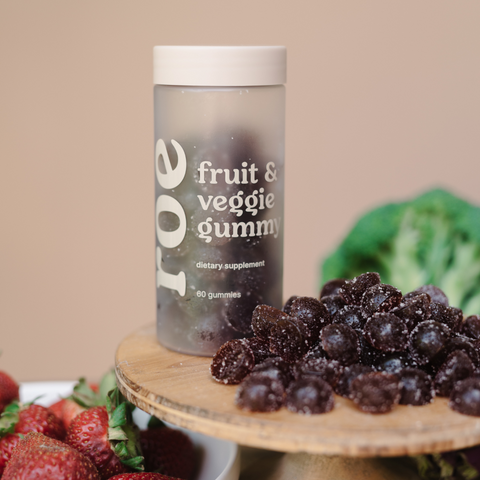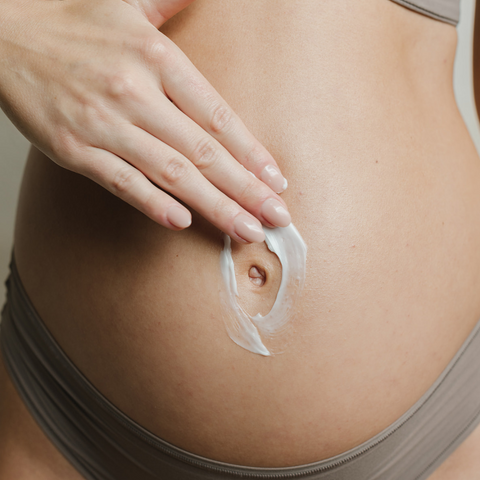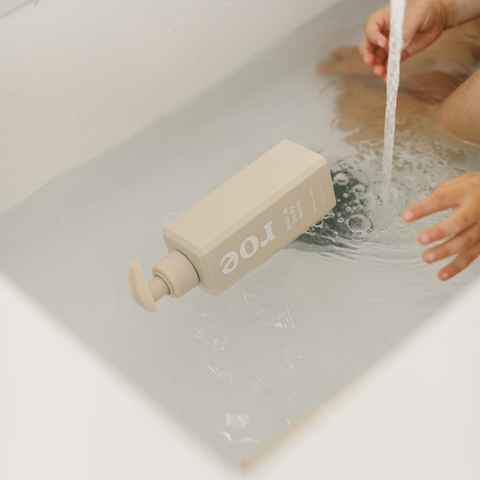After a long swim in a pool, you realize how quickly your skin dries out after even a couple of hours. The reason is that chlorine is an irritant to disrupt bacteria that floats around it.¹ Waterborne organisms that contain diseases die off within minutes of coming in contact with chlorine. Your skin becomes so dry because chlorine is a chemical component used to sanitize water.² Chlorine can disrupt the skin's natural system and the balance of oils it produces. The natural oil your skin produces is specific to your DNA.³ When those natural oils are stripped away, the skin has difficulty staying hydrated—usually, your first response to this scenario would be to apply a cream-based moisturizer/lotion. ⁴ We want to give you an after-pool skincare regimen to help settle the skin.

Children are 10x more permeable to chlorine than an adult.⁵ You may notice your child's skin becoming irritated, itchy, and dry after swimming in a pool. Chlorine has the aptness to dehydrate your kiddo's skin. Topical probiotics act as a natural anti-inflammatory agent to improve symptoms of itchiness, redness, dryness, and irritability in the skin.⁶

Serums infiltrate the deepest layers of your skin and restore with balanced hydration. A water-like serum works best when trying to give the skin the best hydration level. Specifically, probiotics are the most favorable anti-inflammatory agent in serums.⁷ Cream-based consistencies struggle to absorb into the skin. It's important not to discredit moisturizers because they seal hydration into the skin, but it is best to use a serum first to get the most effective use out of any moisturizer.⁸ The slightest amount of cream goes a long way.

Our Power Pair is a stabilizing solution for your child if they show signs of irritation towards their skin. This duo formula primarily works as an anti-inflammatory to settle the look and feel of your kid's skin as well as build protection to the skin barrier. Young-aged skin, in particular, is the most sensitive, and that is why we commit to generating products that are vegan, clean, eco-friendly, paraben-free, sulfate-free, fragrance-free, and cruelty-free.

Sources:
1-Spivey, Angela. "Swimmer, protect thyself: cleaning up the pool environment." Environmental health perspectives vol. 118,11 (2010): A476-82. doi:10.1289/ehp.118-a476
2-Kaye, D. "CDC says there are ways to reduce enteric pathogen transmission in swimming pools." Clinical infectious diseases: an official publication of the Infectious Diseases Society of America vol. 33,2 (2001): i. doi:10.1086/512294
3-Oviedo, Lía, et al. "Monitoring of chlorine decay in public swimming pools in Medellín (Colombia)." Environmental monitoring and assessment vol. 193,1 10. 15 Dec. 2020, doi:10.1007/s10661-020-08779-0
4-Vaughn, Alexandra R et al. "Natural Oils for Skin-Barrier Repair: Ancient Compounds Now Backed by Modern Science." American Journal of clinical dermatology vol. 19,1 (2018): 103-117. doi:10.1007/s40257-017-0301-1
5-Kong, Fanqi et al. "Change in skin properties over the first ten years of life: a cross-sectional study." Archives of dermatological research vol. 309,8 (2017): 653-658. doi:10.1007/s00403-017-1764-x
6-Puebla-Barragan, Scarlett, and Gregor Reid. "Probiotics in Cosmetic and Personal Care Products: Trends and Challenges." Molecules (Basel, Switzerland) vol. 26,5 1249. 26 Feb. 2021, doi:10.3390/molecules26051249
7-Nguyen, Thu Q et al. "A Randomized, Double-blind, Placebo-controlled Clinical Study Investigating the Efficacy and Tolerability of a Peptide Serum Targeting Expression Lines." The Journal of clinical and aesthetic dermatology vol. 14,5 (2021): 14-21.
8-Hebert, Adelaide A et al. "Efficacy of Nonprescription Moisturizers for Atopic Dermatitis: An Updated Review of Clinical Evidence." American Journal of clinical dermatology vol. 21,5 (2020): 641-655. doi:10.1007/s40257-020-00529-9






